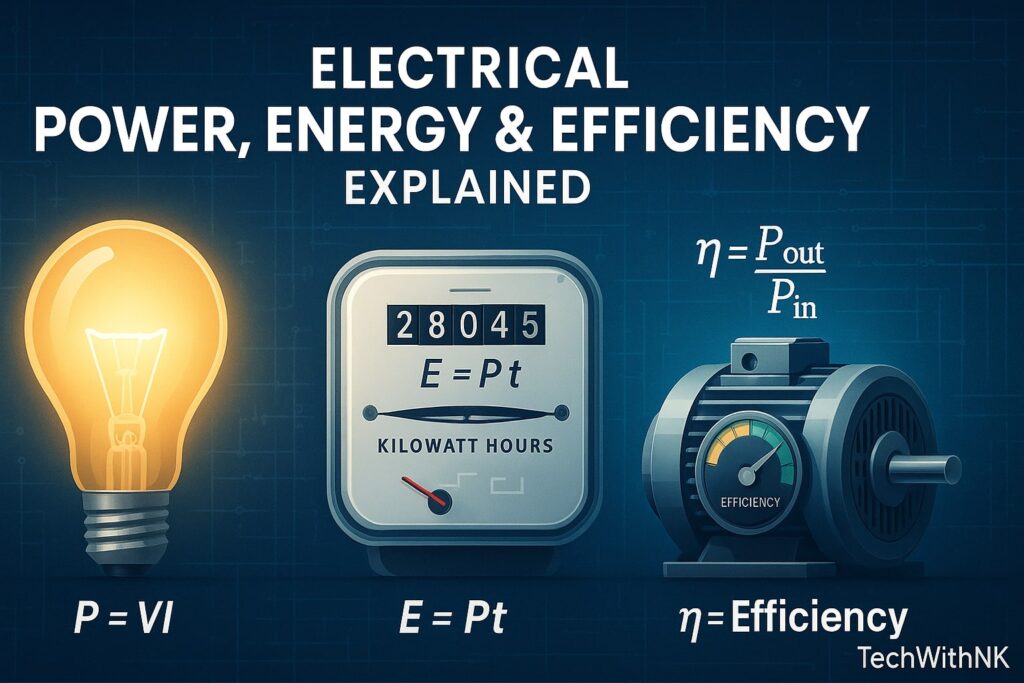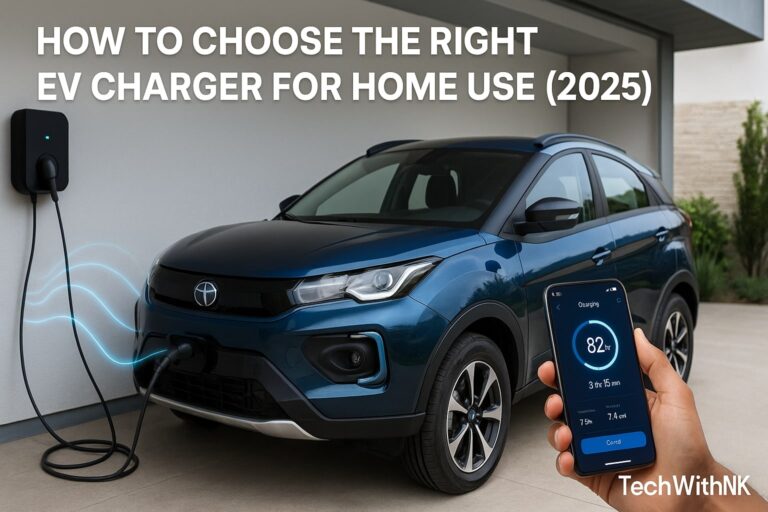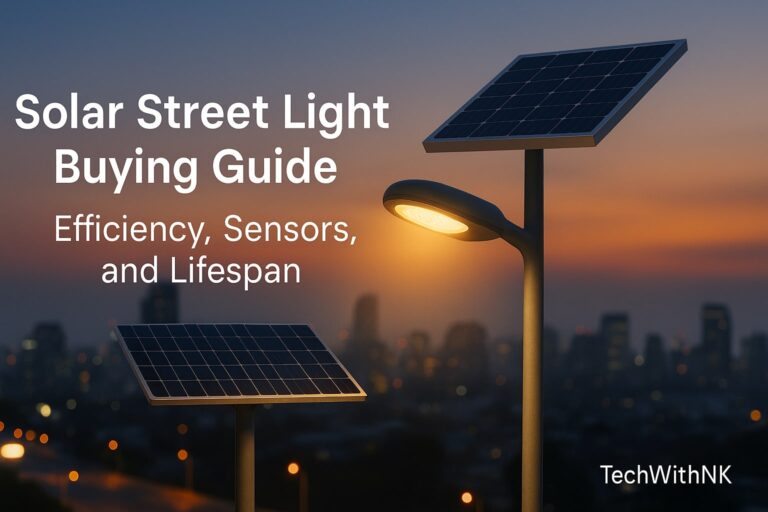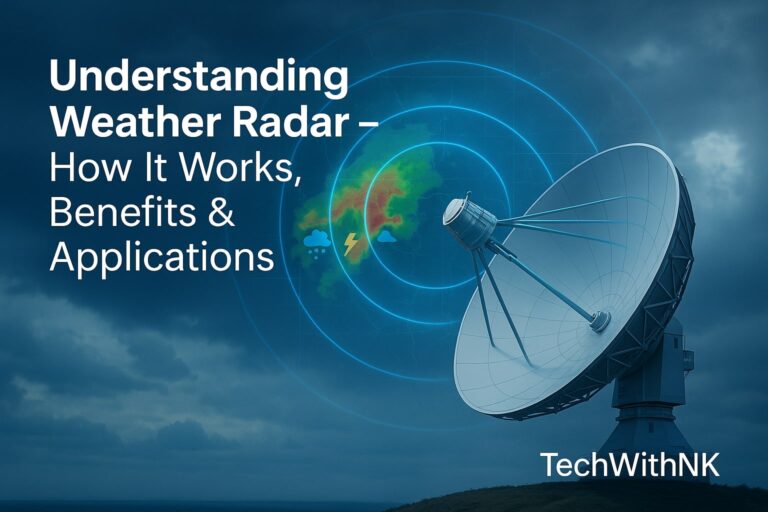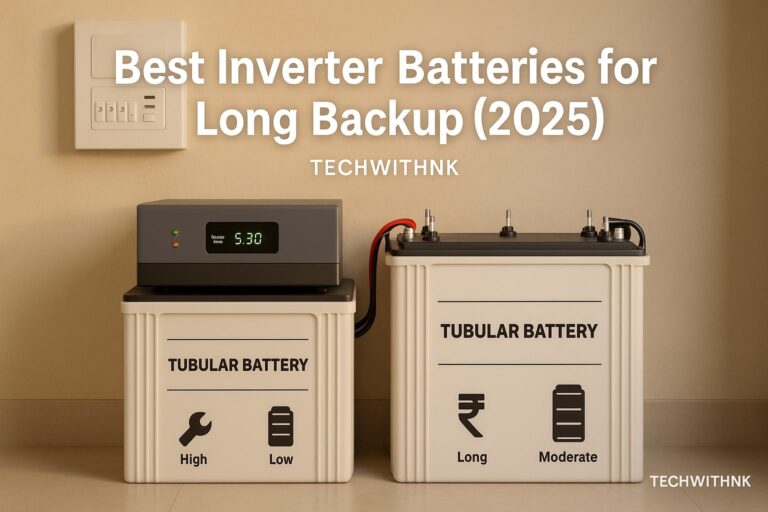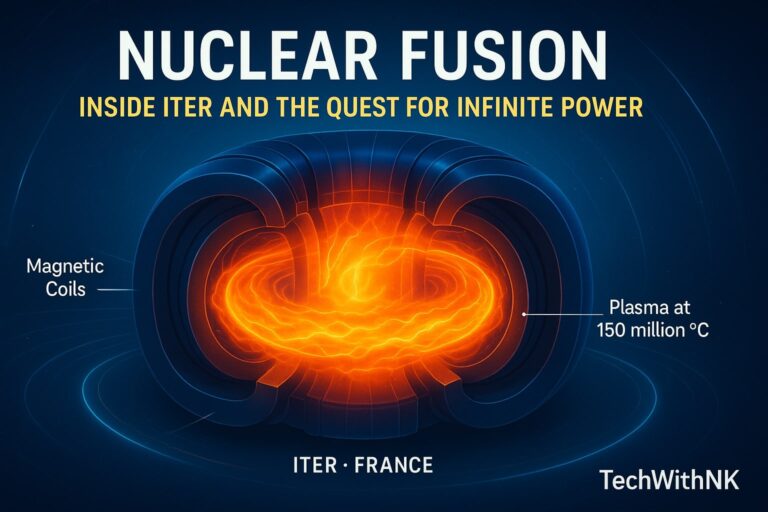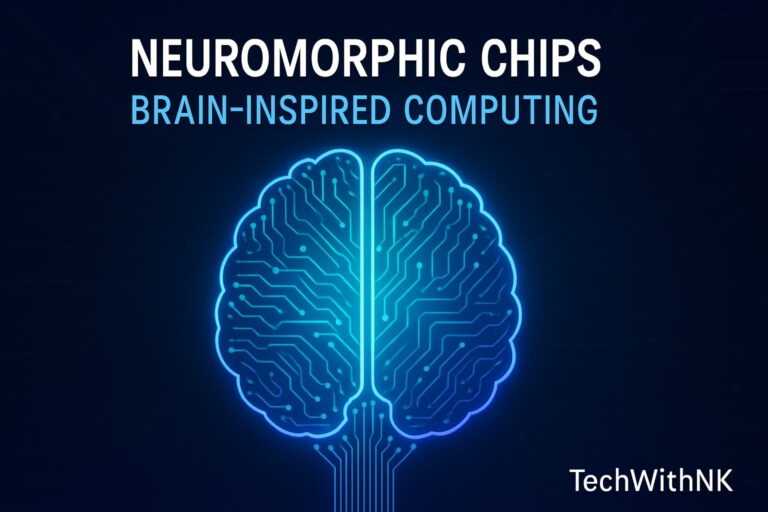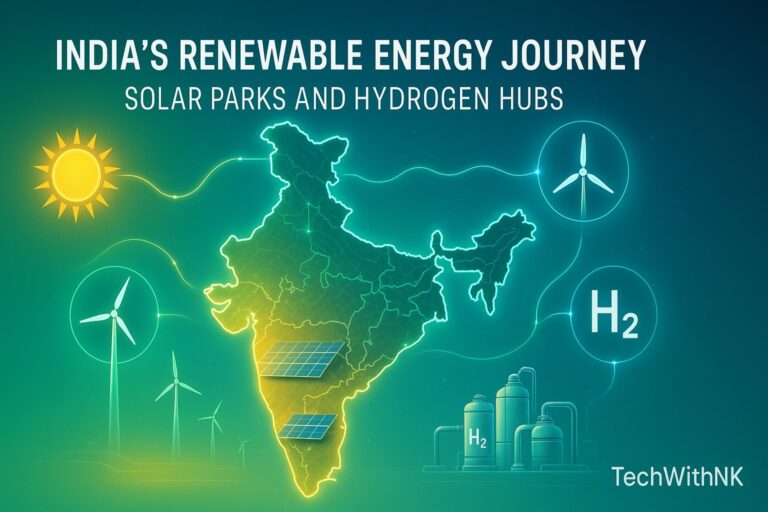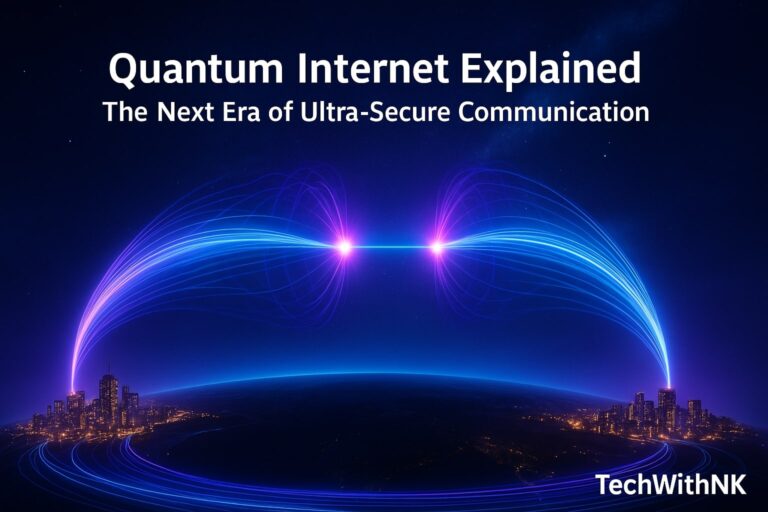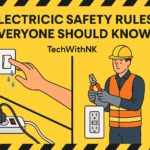Introduction To Electrical Power, Energy & Efficiency
Electricity is the backbone of modern civilization. Every light bulb that glows, every motor that spins, and every device that charges relies on the fundamental principles of electrical power, energy, and efficiency. These three concepts are interconnected yet distinct:
Power describes the rate at which electrical work is done.
Energy measures the total amount of work done or power consumed over time.
Efficiency evaluates how effectively input energy is converted into useful output without wastage.
Understanding these principles is essential not just for electrical engineers but also for students, technicians, and everyday consumers who wish to optimize their electricity usage and reduce costs.
In this blog, we’ll dive deeply into the physics, mathematics, applications, and real-world implications of power, energy, and efficiency.
Table of Contents
Basics of Electrical Quantities
Voltage (V)
Current (I)
Resistance (R)
Power Factor (cos φ)
Electrical Power
Definition & Formula
Types of Electrical Power
Active Power
Reactive Power
Apparent Power
AC vs DC Power
Power Triangle & Power Factor
Electrical Energy
Definition & Formula
Energy in Electrical Systems
Units of Energy (Joule, kWh, MWh)
Real-life Calculations (Household Bills, Industry)
Efficiency
Concept & Formula
Efficiency in Electrical Machines
Transformer Efficiency
Motor Efficiency
Generator Efficiency
Improving Efficiency in Power Systems
Case Studies & Practical Applications
Household Energy Consumption
Industrial Energy Usage
Power Plant Efficiency
Renewable Energy Systems
Energy Losses
Transmission & Distribution Losses
Copper & Iron Losses in Machines
Heat Dissipation & Efficiency Drops
Modern Technologies for Higher Efficiency
Smart Grids
IoT-based Energy Monitoring
Energy-efficient Appliances
Electric Vehicles & Regenerative Braking
Equations & Numerical Examples
Power Calculations (AC & DC)
Energy Bills Calculation
Efficiency Problems
Basics of Electrical Quantities
Voltage (V)
Voltage, or potential difference, is the driving force that pushes electrons through a conductor. It is measured in volts (V).
Equation:V=W/Q
Where:
V = Voltage (Volts)
W = Work done (Joules)
Q = Charge (Coulombs)
Current (I)
Current is the flow of electric charge per unit time, measured in amperes (A).
I=Q/t
Resistance (R)
Resistance opposes current flow in a conductor, measured in ohms (Ω).
R=V/I
Power Factor (cos φ)
In AC circuits, power factor is the cosine of the phase angle between voltage and current. A high power factor (close to 1) means efficient power usage.
Electrical Power
Definition & Formula
Electrical power is the rate of electrical energy transfer in a circuit.
For DC circuits:P=V×I
For AC circuits:
P=V×I×cosϕ
Where:
V = Voltage
I = Current
cosϕ = Power Factor
Types of Electrical Power
Active (Real) Power (P):
The actual usable power consumed by devices to perform work.
P=V I cosϕ (Watts)
Reactive Power (Q):
The power oscillating between source and load due to inductance or capacitance.
Q=V I sinϕ (VAR)
3.Apparent Power (S):
The vector sum of active and reactive power.
S=V I (VA)
AC vs DC Power
DC Power is straightforward: P=VIP = VIP=VI. Used in batteries, solar cells, EVs.
AC Power requires phase angle considerations. Used in households, industries, power grids.
Electrical Energy
Definition & Formula
Electrical energy is the total work done by power over time.
E=P×t
If power is not constant:
E=∫P(t)dt
Units of Energy
Joule (J) → SI Unit
Kilowatt-hour (kWh) → Common for billing
1 kWh = 1000 W × 3600 s = 3.6 × 10⁶ J
Household Example
If a 100 W bulb runs for 10 hours:
E=100×10=1000Wh=1kWh
Efficiency
Concept & Formula
Efficiency is the ratio of useful output power to input power.
η=(Pout/Pin )×100%
Transformer Efficiency
Losses include copper losses (I²R) and iron losses (hysteresis, eddy current).
Motor Efficiency
Motors consume electrical energy and convert it to mechanical energy. Efficiency depends on load conditions, design, and losses.
Generator Efficiency
Generators convert mechanical energy into electrical energy. Efficiency is affected by cooling, winding losses, and friction.
Case Studies & Practical Applications
Household Energy Consumption: Smart meters show how power and energy impact bills.
Industrial Energy Usage: Motors and heaters dominate power consumption.
Power Plants: Coal plants ~35% efficient, nuclear ~40%, combined cycle gas ~60%.
Renewable Energy: Solar panels ~20–25% efficient, wind turbines ~35–45%.
Energy Losses
Transmission Losses: Due to resistance in power lines.
Loss = I^2R
Distribution Losses: Transformers, poor power factor, harmonics.
Machine Losses: Copper, iron, stray load, friction losses.
Modern Technologies for Higher Efficiency
Smart Grids: Optimize energy flow.
IoT Energy Monitoring: Real-time tracking of devices.
Energy-efficient Appliances: BEE star ratings in India.
Electric Vehicles: Regenerative braking recovers energy.
What is the difference between electrical power and energy?
Power is the rate of energy usage (Watts), while energy is the total work done (Joules or kWh).
Why is efficiency important in electrical systems?
Higher efficiency means less energy wasted, lower electricity bills, and reduced environmental impact.
What is power factor correction?
Using capacitors or synchronous condensers to improve power factor, reducing losses in AC systems.
